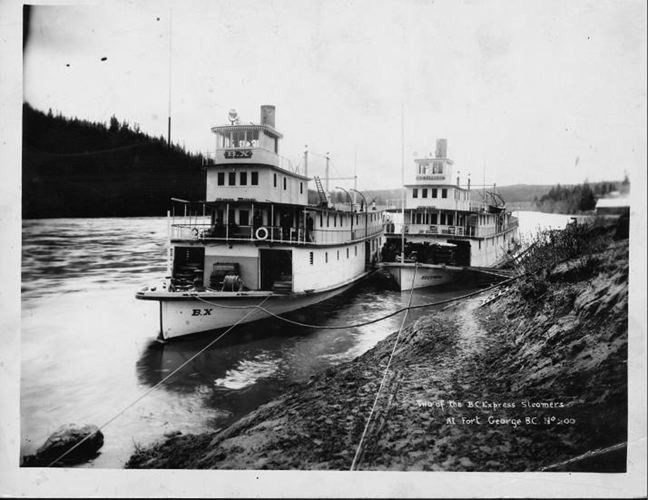This week in Prince George history, Dec. 11-17:
Dec. 17, 1920: The editor of The Citizen offered a nostalgic farewell to "days gone by" in an editorial on Dec. 17, 1920.
"At South Fort George, where the skeleton of one of the west's last and greatest little frontier towns lies stark in the winter snows, crews of wreckers are now engaged in dismantling the last of the 'wheelbarrow' river boats. These are the boats of the British Columbia Express Company, of which no oldtimer can think without a feeling of admiration and affection," The Citizen editorial said.
The company was withdrawing its operations in the B.C. interior, and disassembling the last of the steamboats of the upper Fraser River, according to The Citizen. The engines and equipment from the BX and B.C. Express were sold to the Alberta and Arctic Transportation Company to build steamships for the Mackenzie River basin.
Prior to the arrival of the Grand Trunk Pacific Railway, the B.C. Express Company provided the fast mail and passenger service for the Cariboo and Fort George regions - both on land via the coach roads and on water along the upper Fraser River between Soda Creek and Fort George.
"As the rush of northbound traffic increased, so the old stage company increased its facilities. Great red motor cars replaced the old picturesque 'thoroughbrace' stages, and the finely-equipped mail steamers were placed on the river to supplement the smaller craft," The Citizen wrote. "It's personnel included, in modern times and days gone by, men of big calibre, who were never daunted by the hard task of running a continuous mail and passenger service into hard country year after year, in the floods of summer or the snows of winter."
The arrival of the "iron horse" to central B.C. metamorphosed the region, The Citizen wrote, pushing out the time-honoured transportation methods of the past.
"It is good to have lived in the days when one climbed up on the high seat of the leather-sprung stage coach in the cold gray dawn and raced over the old Cariboo road behind six horses, but it is better still to have witnessed the arrival of the first train into this city," The Citizen wrote.
The arrival of the railway in Fort George in January, 1914 it marked the beginning of the end for steamships on the Fraser River, and the Skeena River further west. But paddlewheelers would continue to serve as a critical transportation link in the Mackenzie River basin as late as the 1940s (more on that below).
What is interesting about this editorial is that it shows that yearning for the seemingly simpler days of the past is hardly a new phenomena. As technology changes, some industries -and the people who work in them - are left behind.
Steamships operated in the Mackenzie River watershed - the Peace, Athabasca, Slave, Lesser Slave and Mackenzie rivers, and on Great Slave Lake, Lesser Slave Lake and Athabasca Lake -from 1882 until the 1940s.
Paddlewheelers connected Athabasca Landing - north of Edmonton - to communities including Fort McMurray, Fort Fitzgerald, Fort Smith, Yellowknife, Hay River and beyond all the way to Aklavik in the Mackenzie River delta on the Arctic shore.
The water transportation business in the Northwest Territories was booming in the 1920s and the Hudson's Bay Company, Lamson and Hubbard Trading Company, Alberta and Arctic Transportation Co. and Northern Traders Company were all competing for a slice of the action with their own fleets of sternwheelers.
The B.C. Express Company folded after the arrival of the railway, merged with the Alberta and Arctic Transportation Co. and relocated its remaining assets to the Mackenzie watershed.
Unfortunately, I could not find out what happened to the engines - which vessels the were used for, etc. - within the timeframe of this week's column. But if I do come across the answers, I'll be sure to include an update at a later date.
Also, if you're wondering, a thoroughbrace stagecoach is a coach with one or more leather straps supporting the carriage which act as of suspension system.
To explore 100 years of local history yourself, visit the Prince George Citizen archives online at pgc.cc/PGCarchive. The Prince George Citizen online archives are maintained by the Prince George Public Library.



